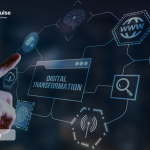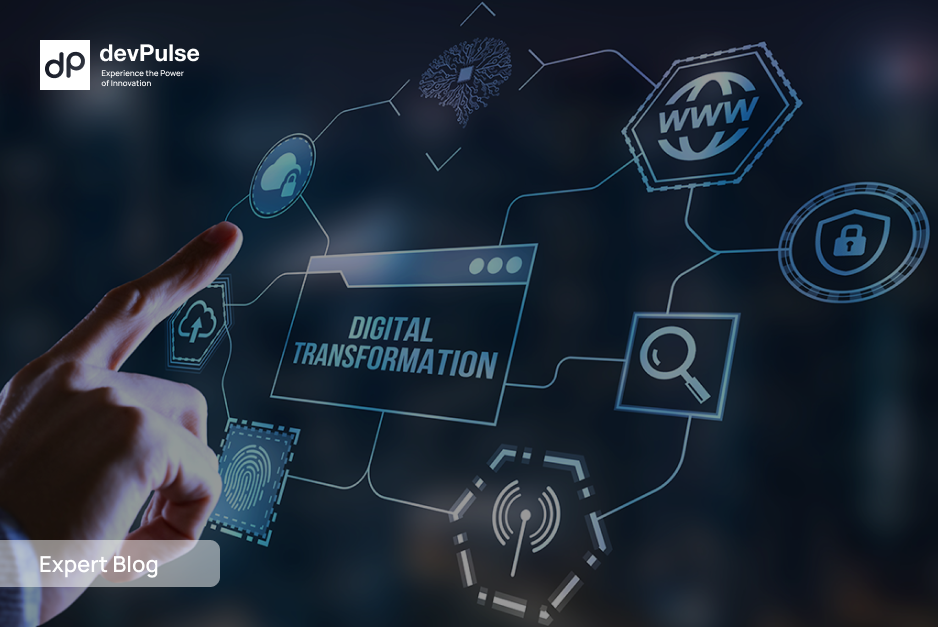Are your business systems holding you back rather than driving you forward? If you’re struggling with slow software, compatibility issues, or systems that just can’t keep up with modern demands, you’re not alone. Many businesses today operate with legacy systems that have become more of a burden than an asset.
In our previous discussion about digital transformation, we explored how businesses can evolve digitally. Now, let’s tackle one of the most critical aspects of this evolution: modernizing legacy systems.
Why Legacy Systems Become Business Bottlenecks
Legacy systems often start as reliable business tools. However, as time passes, these once-dependable systems can become serious obstacles. Here’s what typically happens:
Your accounting software can’t connect with modern banking APIs. Your inventory system doesn’t support mobile access. Customer data sits trapped in outdated databases. These aren’t just technical problems – they’re business limitations that affect your bottom line.
The Real Cost of Outdated Systems
The impact of legacy systems goes beyond obvious technical issues. When your systems are outdated:
- Teams create manual workarounds for simple tasks
- Data remains trapped in silos, preventing useful insights
- New feature requests become increasingly difficult to implement
- Security vulnerabilities grow more concerning
- Integration with modern tools becomes nearly impossible
Each passing year makes these systems more expensive to maintain and riskier to rely on. What worked five years ago now creates daily friction that slows down operations, frustrates employees, and limits your ability to serve customers effectively.
Signs It’s Time for System Modernization
Performance issues often provide the first clear warning. Your team starts each day knowing simple tasks will take twice as long as they should. Reports that competitors pull in seconds take your systems hours to generate. These delays aren’t just frustrating – they impact every aspect of your business operations.
Security Concerns
Modern cyber threats evolve daily, but legacy systems remain frozen in time. Your business might be running software that hasn’t seen a security update in years. Even worse, these outdated systems often store sensitive data in vulnerable formats, creating risks that grow with each passing day.
Key security red flags include:
- Inability to implement modern security protocols
- Missing critical security patches
- Outdated encryption standards
- Lack of multi-factor authentication options
Integration Problems
In today’s connected business environment, isolation equals limitation. Legacy systems create digital barriers that prevent growth and innovation. Modern cloud services can’t connect to your system. Mobile access remains limited or impossible. Your team spends hours manually moving data between systems that should talk to each other automatically.
Rising Maintenance Costs
What starts as routine maintenance evolves into constant troubleshooting. Finding developers who understand your legacy system becomes increasingly difficult and expensive. Simple updates require complex workarounds, and each “fix” adds another layer of technical debt.
Your maintenance costs reveal the problem when:
- Basic features need custom development
- System downtime increases with each update
- Support costs keep rising
- Quick fixes turn into major projects
Approaching Legacy System Modernization
Every business wants their modernization effort to succeed. But rushing into changes without proper assessment can create more problems than it solves. Let’s look at proven approaches that minimize risk while maximizing impact.
Assessment First
Start by mapping your current system’s ecosystem. What actually happens in your daily operations? Not what should happen according to documentation, but what your team really does to get work done. This reveals:
Critical workflows that must be preserved Hidden dependencies between systems Manual processes that fill system gaps
Understanding these elements helps you choose the right modernization path.
Modernization Pathways
Different situations call for different approaches. Here are the main strategies that successful modernizations follow:
The Incremental Upgrade Replace system components one at a time while maintaining core functionality. Think of replacing individual modules while keeping the main system running. This approach works well when your current system is stable but needs specific improvements.
The Parallel Transition Build a new system alongside the old one, gradually moving operations over. This reduces risk but requires managing two systems temporarily. Many businesses choose this path when they need to maintain continuous operations.
The Complete Overhaul Sometimes, starting fresh makes more sense than trying to fix or upgrade existing systems. This works best when:
- Current systems are severely outdated
- Business needs have changed dramatically
- Integration costs exceed replacement costs
- Security risks demand immediate action
Implementation Strategies That Work
Starting with the Incremental Upgrade approach, success often comes from focusing on high-impact, low-risk changes first. For example, a manufacturing company might start by modernizing their inventory tracking while keeping their core production systems unchanged.
Key steps for incremental success:
- Identify independent system components
- Prioritize based on business impact
- Test extensively before each change
- Keep clear rollback plans ready
Making Parallel Transitions Smooth
The parallel approach requires careful orchestration but offers the safest path to modernization. Your new system runs alongside the legacy system, allowing for thorough testing and gradual user transition.
A financial services firm used this strategy effectively by:
- Setting up modern cloud infrastructure
- Moving customer data in small batches
- Training team members on new features
- Validating results at each step
Complete System Overhaul
Sometimes you need to start fresh. While this might seem risky, proper planning makes it manageable. Critical elements include:
Data Migration Planning
- Clean and validate existing data
- Map data structures between systems
- Plan for historical data preservation
User Training and Support Modern systems often bring new workflows. Your team needs:
- Clear documentation
- Hands-on training sessions
- Support during the transition
- Regular feedback channels
Avoiding Common Pitfalls
Each modernization path has its challenges. Watch out for:
- Underestimating data complexity
- Rushing user training
- Missing critical integrations
- Inadequate testing cycles
Measuring Modernization Success
Simply launching a new system isn’t enough – you need to know it’s delivering real business value. Let’s look at how to measure the impact of your modernization efforts.
Beyond the Basic Metrics
While tracking system uptime and response times matters, true success shows up in your business operations. Effective modernization transforms how your team works:
Processing times drop from hours to minutes Customer response rates improve dramatically Data becomes instantly accessible Teams spend less time fighting technology
Impact Across Your Business
Successful modernization creates ripple effects throughout your organization:
Financial Metrics
- Reduced maintenance costs
- Lower operational expenses
- Better resource allocation
- Increased revenue from new capabilities
Operational Improvements Your teams can focus on growth instead of maintenance. Look for:
- Faster decision-making with better data
- Increased customer satisfaction
- Improved employee productivity
- Reduced error rates
Looking Forward
Modern systems don’t just solve today’s problems – they create new opportunities. Your business gains:
- Flexibility to adopt new technologies
- Ability to scale operations quickly
- Better market responsiveness
- Enhanced competitive advantage
A modernized system becomes your foundation for continuous improvement and innovation, not another legacy burden waiting to happen.
Making the Move to Modern Systems
Modernizing legacy systems might seem daunting, but staying with outdated technology costs more in the long run. Every day your business runs on legacy systems is a day of missed opportunities and accumulated technical debt.
The key is taking that first step. Start by examining where outdated systems hurt your business most. Look for:
- Which processes cause the most frustration
- Where you’re losing time to manual workarounds
- What opportunities you’re missing due to technical limitations
Remember, modernization isn’t just about new technology – it’s about setting your business up for future growth. Whether you choose an incremental upgrade, parallel transition, or complete overhaul, the goal remains the same: creating systems that help your business thrive.
Ready to Start Your Modernization Journey?
If you recognize the signs we’ve discussed in your own systems, it’s time to take action. Our digital transformation guide provides a broader context for your modernization efforts.
Want to explore how system modernization could transform your business? Let’s talk about your specific challenges and find the right path forward.
Contact us to discuss your modernization needs and discover how we can help you build a stronger, more efficient business.




